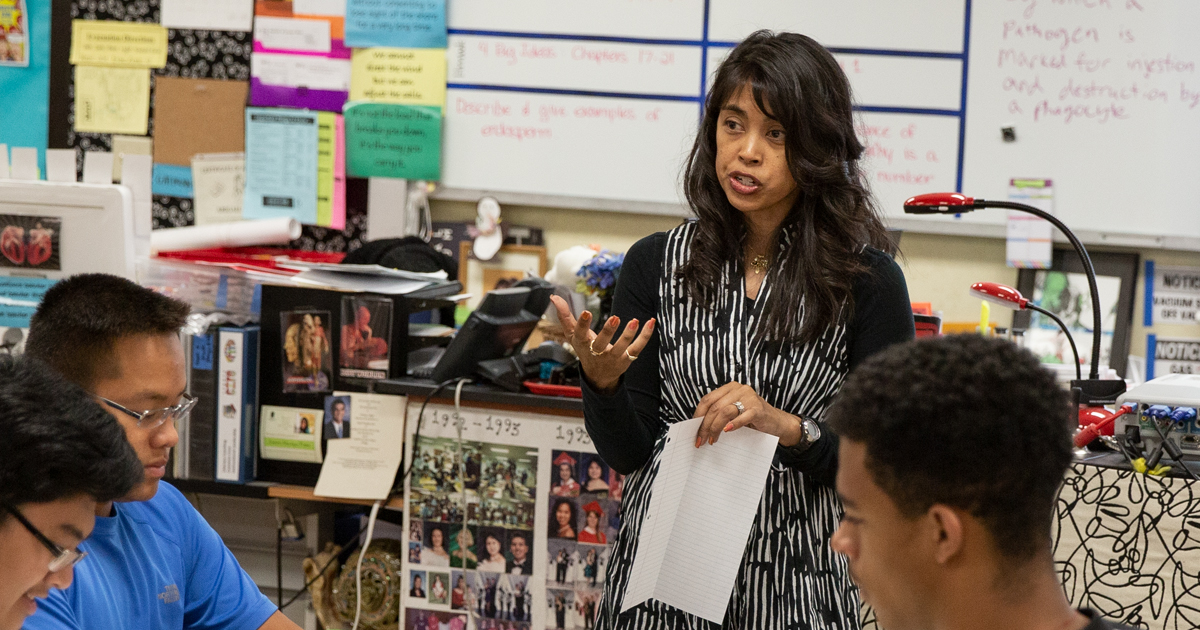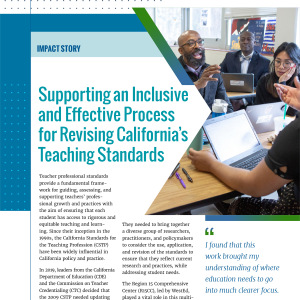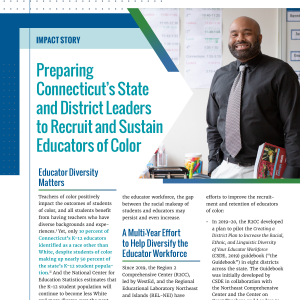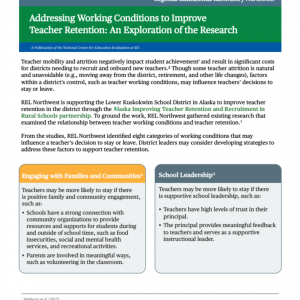How States Play a Key Role in Strengthening the Teacher Workforce
Posted on

The race to attract and support educators to work in classrooms is on, and the need has never been greater. Since the beginning of the pandemic, Regional Comprehensive Centers 2, 13, and 15 have doubled down on efforts to help their respective state education agencies unlock new pathways for recruiting—and keeping—teachers in schools.
Most of the work being done to address teacher shortages is happening at the school and district levels. This localized lens is key, says WestEd senior managing director Gretchen Weber in Addressing the Teacher Shortage: Recruiting and Retaining Teachers—Q&A, because the optimal solution at any particular school depends on factors at play at that site. The specific combination of factors, she notes, can also vary widely across schools.
Furthermore, a new review by the Regional Educational Laboratory Northwest examines the relationship between teacher working conditions and teacher retention, shedding light on where districts should be focused: the most common working conditions that may drive teachers to come, stay, or leave.
That said, state departments of education can play key roles in opening new opportunities that districts and schools may not otherwise discover. “In short, state departments of education have a tremendous opportunity right now to pull specific levers that will strengthen the entire profession,” says Caitlin Beatson, senior program associate at WestEd, who serves as a deputy director of the Region 2 Comprehensive Center.
Some policy solutions to increasing the teacher pipeline are fairly easy to identify. For example:
- Connecticut recently opened up its certification requirements and, with it, the opportunity for thousands more licensed educators beyond its borders to work in its schools. More educators licensed outside of Connecticut may now consider working in the state’s schools since it moved to give substantial reciprocity to educators from 11 nearby states, the District of Columbia, and Puerto Rico. Educators in select states who hold an “active, valid certificate” may apply and obtain a Connecticut certificate after verification by the Connecticut State Department of Education now that the northeastern reciprocity agreement has been expanded. Research supports this policy change: Licensed teachers who move in search of job opportunities are more likely to select states with reciprocity because transition barriers and requirements for obtaining licensure in those states are reduced. To assist Connecticut in making this key move, the Region 2 Comprehensive Center developed the Teacher Certification Reciprocity Tool, which compares certification requirements among the identified states and territories and significantly reduces the time required for Connecticut State Department of Education analysts to approve out-of-state candidates for certification.
To learn more about this tool and access it, visit the Comprehensive Center Network’s Enhancing Certification Reciprocity to Expand Connecticut’s Educator Talent Pool. Furthermore, to access the Interstate Teacher Mobility Compact, a new national compact that will create teacher reciprocity among participating states once 10 states come aboard, visit the Teacher Compact website.
- New Mexico has increased pay for teachers in its highest-need schools. The state now requires minimum entry-level salaries of $50,000, up from $40,000 for a 9-month contract, to encourage prospective teachers to work in schools with high populations of at-risk students. “Improved teacher salaries have been an important incentive to get people back into the classroom, and New Mexico’s teachers appreciate the hard work of Governor [Michelle] Lujan Grisham and the Legislature to make this happen,” the state’s teachers’ union president, Mary Parr-Sanchez, said in a statement to ABC News.
For more on why the first step in solving teacher shortages should be increasing teacher compensation, see Now is the Time to Increase Teacher Compensation by Sabrina Laine, former Chief Program Officer at WestEd.
But when it comes to how states should assist school districts technically in problem-solving, planning, and course correction, given the sheer size of the demand, it is not always clear where to start. “Most state education agencies don’t have the thousands of employees that are ideally needed to build out the individual capacity of hundreds or thousands of districts,” says Beatson. “State time and energy has to be very intentionally organized and targeted.”
WestEd Comprehensive Centers have identified a way for states to do just that. States served by Comprehensive Centers in Regions 2, 13, and 15 are helping their respective school districts strengthen educator workforces by serving in capacity-building roles that fall into four categories:
- Communicators of mission-critical data. For example, states can conduct and disseminate key relative data analyses of the educator workforce, including vacancy and attrition rates and level of teacher diversity, through a data dashboard.
- Connectors to resources. States can efficiently connect localities to critical substantive resources like evidence-based best practices, guidebooks, toolkits, trainings, and webinars.
- Conveners of groups of districts with common needs. States may, for example, invite groups of districts grappling with common contextual needs to a summit where they can engage in peer learning, sharing, highlighting bright spots, and forming partnerships.
- Coordinators across fields or jurisdictions. Finally, when agencies or other regions serve similar populations or are tackling similar challenges, states may establish cross-state or cross-agency connections that districts cannot efficiently establish on their own. For example, states are best suited to pull labor, workforce development, and education agencies together to effectively coordinate services and supports regarding registered teacher apprenticeships, now a federal priority.
“State education agencies simply can’t do it all,” Beatson says. “They can, however, drive these four capacity-building gears to help LEAs along the path toward solving these issues.”
To expedite local progress and maximize effectiveness—to pull as many levers as possible to help solve the teacher shortage, as Beatson puts it—Regional Comprehensive Centers throughout the nation have been working in recent years to help the states they serve implement a range of solutions.
Coming next: In June, we will showcase snapshots, by lever, of current state-level teacher workforce efforts underway in Arizona, California, Connecticut, Nevada, New York, and Rhode Island.
The Regions 2, 13, and 15 Comprehensive Centers work with state education agencies and their regional and local constituents in Arizona, California, Connecticut, Nevada, New Mexico, New York, Oklahoma, Rhode Island, Utah, and the Bureau of Indian Education to improve outcomes for all children and better serve communities through capacity-building technical assistance, content expertise, and other services.
The contents of this blog post were developed under a grant from the Department of Education. However, the contents do not necessarily represent the policy of the Department of Education, and you should not assume endorsement by the federal government.




